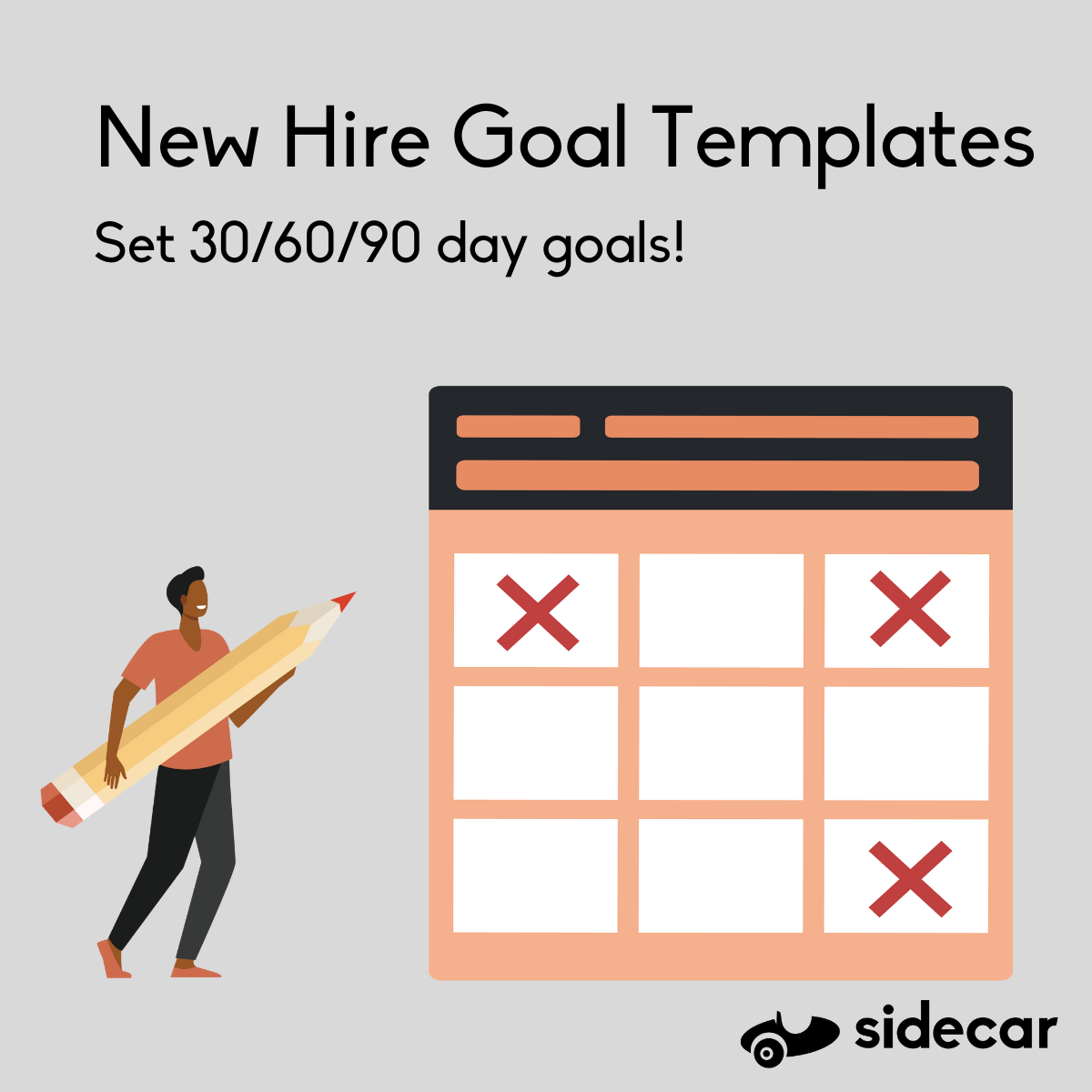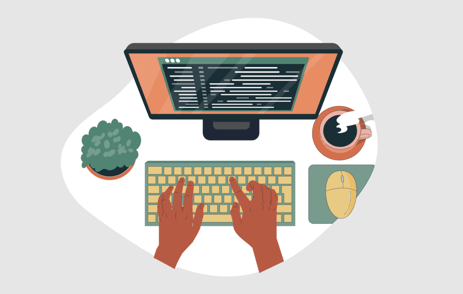The work landscape has changed, and chances are, it will never be the same. Whether it’s because of the pandemic or natural changes like staffers retiring, your organization is likely looking younger than ever. So how do you go about hiring Gen Z staff?
This new generation of professionals is greatly misunderstood and has shifting priorities that might not fit with your organizational culture. However, they reflect the changing landscape of the modern workplace and are thus an integral pool of candidates you should be looking to attract.
But what are they concerned with and what do they need to know about your organization?
What is Generation Z?
People born between 1997 and 2012 are known as Gen Z. They account for over 2 billion people globally and will likely make up 27% of the workforce by 2025. For associations, Millennials likely make up the other large chunk of their young professional demographic. Born between 1981 and 1996, they account for 35% of the workforce today and are predicted to comprise over 75% by 2025.
While they have similar interests and are both tech-savvy, their priorities and needs from a role differ.
The pandemic impact
It’s important to note that this generation was also one of the hardest hit during the pandemic. In a recent report by Data for Progress, they found that over 52% of respondents under the age of 45 said they lost their jobs, had their hours cut or were put on leave. And these concerns could have far-reaching implications.
“Gen Zers have little time to mourn the loss of their final semester, because an economic collapse can set back their futures. It could leave them like the older millennials who graduated during the Great Recession, with grim job outlooks and a stagnation in financial growth,” says Dominic-Madori Davis in an article for Insider.
Understanding your Gen Z candidates
The concept of younger generations upending the way we do things is not new – and even with Gen Z – will not be the last time organizations face this. As newer generations enter the workforce, their concerns and mindset will often be at odds with your organization’s culture.
Gabe Kennedy, founder of the herbal supplement brand Plant People, summarized it perfectly in a New York Times article. While older generations and “boomers” were ok with punching the clock every single day, “for millennials it was, ‘There’s still an office but I can play Ping-Pong and drink nitro coffee.’ For the next generation it’s, ‘Holy cow I can make a living by posting on social media when I want and how I want,’” he said.
Gen Z tests the limits of traditional work
The understanding that they have options when it comes to income and plenty of demand in the job market leaves them with an advantage and willingness to make changes to find that ideal role. According to LinkedIn’s Workforce Confidence survey, 25% of Gen Z respondents said they were hoping to leave their current position within the next six months – compared to baby boomers who landed at 12%.
This is corroborated by a McKinsey & Company survey that found that 25% of employees who voluntarily left the workforce during the pandemic are likely to leave a job now. Why?
Per the study, “they say that if professional development, workplace flexibility, support for mental and physical health, and other needs aren’t being met at one company, they will look for the right conditions elsewhere.”
So what does Generation Z want?
So, for associations facing a tight labor market, it’s critical to understand what Gen Z wants and how they can keep them engaged at work for a long-term fix.
- They want to make a difference – Gen Z is often leading the charge when it comes to sociopolitical issues. According to a RippleMatch survey, “68% of respondents in Fall 2020 said a company's diversity & inclusion efforts have become more important to them in the wake of social justice protests in 2020.” They are looking for organizations that not only take a stance, but also make actual visible change.
- They want to be developed – Young professionals are just entering the workforce, which means they need to learn many of the skills that come with a first job. Outside of those soft skills, they’re also looking for career-specific training that requires some form of mentor relationship – something they’ll actively look for when interviewing.
- They want flexibility – There is no way around it - flexibility is king in today’s labor market, and this is even more true for Gen Z workers. They want flexibility in every aspect of their role – hours, location, responsibilities and even the way they move up within an organization.
Common Gen Z misconceptions
A major problem with hiring and retaining Gen Z is that they’re often misunderstood by senior management, who often come from older generations. Some of these misconceptions include:
- They lack work ethic – The traditional 9 to 5 workday is broken and Gen Zers are quick to point that fact out. If they finish their work quickly, they won’t hesitate to ask to leave early. And while this can be interpreted as a work ethic issue – in reality, it’s their way of creating work-life balance.
- They’re not the most loyal – Gen Z often gets a reputation for job-hopping. The reality is, so is everyone else, especially during these times when there are plenty of options, meaning workers don’t have to settle for less. The fix? Create a better environment with professional development incentives and a nurturing environment that continually teaches and challenges them.
- They’re overly sensitive – Once again, mental health is not a new issue and also not attributed solely to Generation Z. However, they are the ones most likely to take a day for mental health or simply to call out because they’re not in the right headspace. According to a McKinsey & Company survey, “one in four Gen Z respondents reported feeling more emotionally distressed (25 percent), almost double the levels reported by millennial and Gen X respondents (13 percent each), and more than triple the levels reported by baby boomer respondents (8 percent).”
The fact of the matter is that many of these characterizations are not necessarily issues. Rather, they’re seen as issues because they challenge the status quo on what older professionals and organizations deem as the “norm.”
Professionals in just about every generation shifted priorities during the pandemic. They’re looking to find that work-life balance and expect more from their employer – Gen Z is simply more outspoken and willing to make a change if it isn’t the right fit.
6 Strategies to recruit Gen Z
So now that we know a bit about what Gen Z is looking for and some of the traits they bring to the table, how can your association create a welcoming and attractive environment when hiring Gen Z?
1. Be flexible
This is number one for a reason. Flexibility is key to everything in the post-pandemic work landscape – there is no longer a one-size-fits-all look to the way we work. Gen Z wants flexibility not just in their hours and location but also in the way they take on a role. While they may be applying for a specific position, they still want to have flexibility to explore other departments within your organization. Creating an environment where they can actively progress and experiment can help keep them engaged at work and allow for more creative problem solving within your organization.
2. Focus on the role
While many organizations rely on their brand and reputation to attract talent, the reality is that most young professionals are looking for opportunities that benefit them and their long-term goals.
“For Gen-Z, the role trumps the brand. That’s why they are twice as likely to pursue their dream job at a company they don’t know, over a less-ideal position at a company they’ve heard of,” says Marc C. Perna in an article for Forbes.
As such, when posting a job and going through the hiring process, be sure you’re outlining specifics of the role, including responsibilities and daily tasks, along with a plan on how they will progress once starting.

New Hire Goal Templates
The work landscape has changed, and chances are, it will never be the same. Whether it’s because of the pandemic or natural changes like staffers retiring, your organization is likely...
Download Now
3. Help them make connections
Gen Z is just joining the workforce, which means they don’t have the connections they need to progress and likely don’t know how to get them. As networking has continued to become a more important part of career development and growth, actively encouraging and creating opportunities for that to happen is essential.
An excellent place to start is with a mentorship program. Your new Gen Z workers can be paired with experienced staffers or even millennial mentors that can help them get their bearings in a new role while also creating meeting opportunities with stakeholders within your organization.
4. Prioritize balance
We already know that burnout is on the rise. And while productivity might have boomed, it had a cost. A Microsoft study found that one in five survey respondents said their employer didn’t care about their work-life balance, and to make matters worse, 54% feel overworked.
Based on metrics from their Microsoft 365 products, they found that the time spent in Microsoft Teams meetings had doubled globally, and “Teams user is sending 45 percent more chats per week and 42 percent more chats per person after hours.”
This increased work and lack of boundaries have left associations with staffers who feel underappreciated, tired, and less likely to stick around. Organizations need to work to prioritize work-life balance and make it an integral part of their pitch when hiring Gen Z talent.
5. Focus on culture in and out of the office
If there is one dominant characteristic amongst Gen Z, it’s their focus on social justice. These professionals are activists, and it isn’t something they only want to do in their spare time. The companies they choose to work for need to take an active role and stance on these topics.
Gen Z is also interested in a diverse culture and representation in leadership. According to data from RippleMatch, 60% of respondents said they looked at the leadership and executive team when applying for jobs. They’re also looking for representation in leadership and training opportunities, with 45% of underrepresented women looking for professional development programs tailored specifically for unrepresented groups.
6. Don’t forget the benefits
Just like millennials entered the workforce amid the Great Recession, Gen Z faces student loan debts, a shaky healthcare system and wage losses stemming from cuts during the pandemic.
In an article for Sage, Charlotte Penny cites research from UK-based finance company Zopa, 40% which says that Gen Z-ers consider saving to be “fundamental.” Penny adds, “Gen Z is more likely to pay attention to not only the salary, but the full range of financial incentives on offer at your company.”
Many roles often boast competitive benefits packages, but Gen Z wants to see it before buying in. Make it a point to outline your perks, including specifics on health benefits and professional development. And be sure to talk to your existing young professionals in your organization – they can often give you insights as to what matters most for younger talent.
Bonus – Look to the gig economy
While many Gen Z professionals are looking for a long-term fit, they’re also open to experimentation and want to dabble in different industries. If your association has immediate needs or project-specific work, giving opportunities to young freelancers can be a great strategy for your organization to widen its talent pool and gather data helpful in hiring Gen Z.
How can Gen Z help your organization?
So why should associations even be interested in having these “potentially problematic” and “outspoken staffers” join their teams?
Because change is needed, and it can make all the difference for your membership.
Many of the changes that Gen Z needs to be happy with work can benefit your organization as a whole. Plus, hiring Gen Z means:
- Modern perspectives – For starters, Gen Z offers a fresh perspective on the employment landscape. As Microsoft points out, they’re “the first generation to start their jobs in a completely remote environment on such a widespread basis, their experience will set expectations and attitudes toward work moving forward.” Taking the time to listen and involve them in decision-making for your association is key to modernizing effectively.
- Technology-first mindset – As associations look to tackle digital transformation, Gen Z can be their greatest asset. Technology was a critical aspect of their upbringing and has shaped their problem-solving skills. This is an exceptionally handy tool when transitioning your association onto social media and with modern AMS platforms as well.
- DEI champions – As mentioned above, Gen Z is leading the charge on diversity and inclusion. Not only are they a great resource when developing these programs, but they are likely the ones who will be most inclined to hold your organization accountable.
Should associations prioritize hiring the next generation?
The answer is absolutely. Whether it’s millennials or Generation Z, your organization needs to embrace and engage young professionals. Why? Because they’re members and staff of the future.
Not only do the changes outlined above, like prioritizing benefits and creating flexibility, help your Gen Z talent, but it helps your entire team, regardless of their generational classification.
These changes are also not an option; they’ll happen whether your organization is on board or not. Choosing to ignore them can have significant implications on your talent pool, employee satisfaction and ability to remain nimble in changing times, which is why prioritizing hiring Gen Z is never a bad thing.
Tags:
Association Management
March 11, 2022


